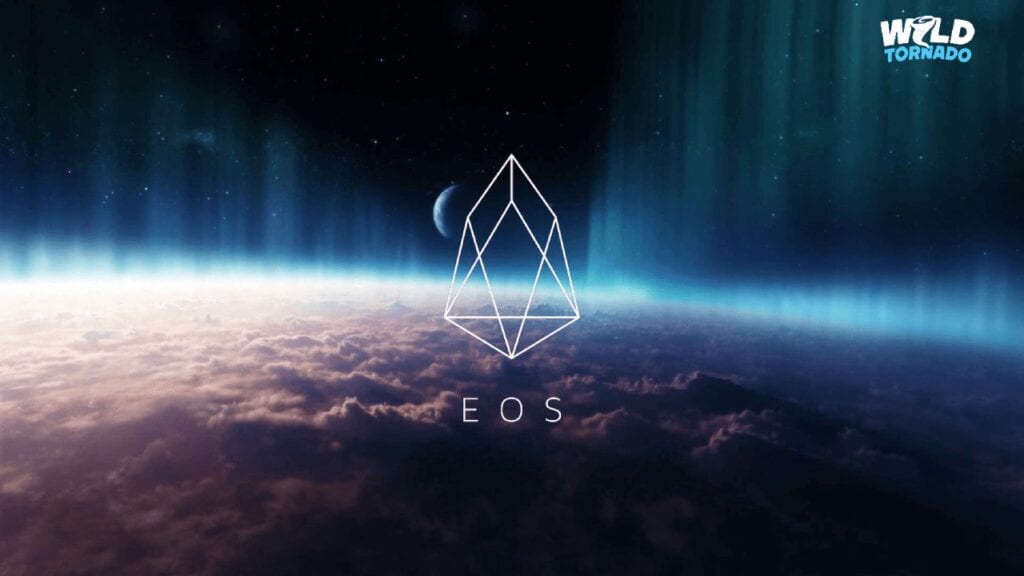EOS is a platform that operates on blockchain and is aimed at the creation of dApps (decentralized applications). It constitutes of EOS.IO – the operating system that keeps the EOS blockchain network under control, and EOS tokens.
In terms of the purposes it serves, EOS is akin to Ethereum. As a matter of fact, advocates of EOS dubbed the platform the ‘Ethereum killer’, which means that EOS performs the same functions as ETH, and, by the same token, it surpasses Ethereum in many ways. How does it manage to do it? Well, this post is intended to shed light on this question. And we promise to put it all in simple terms so that both a tech geek and an average Joe can easily grasp the concept.
EOS Broken Down – History
All started back in 2017 when a white paper was published. Then it took one year until the necessary funds were raised during the period of the IOC.
An interesting fact is that EOS amassed a whopping 4 billion dollars by means of its ICO (the initial coin offering – a method of raising funds for cryptocurrency projects), which is the biggest sum raised via CIO to date. For comparison sake, Ethereum raised a significantly less impressive sum – 18.4 million dollars.
The development of software EOS.IO is credited to Daniel Larimer, the Chief Technology Officer at block.one. His earlier enterprises include multi-billion dollar projects, such as Bitshare and Steem.
Definition
EOS is a platform that has an operating system in its core and is intended for the development of decentralized apps on a mass adoption scale, which is claimingly underpinned by its ability to perform millions of transactions per single second with no or very low fees involved.
Why is the mission of EOS essential? Simply because decentralized applications (dApps) are said to be the face of the Internet in the not so distant future. Even now there are a plethora of them operating on different blockchains.
One of the great examples of a dApp is the so-called Eth-Tweet that functions on the grounds of the Ethereum blockchain. Basically, this is the same Twitter that we are used to, but its main attribute, decentralization, makes it stand out as a way better platform. What we mean is that there are no third parties in control of what you post and it is only you who are entitled to remove your messages. Further to this, in order to encourage sharing information through the platform, accounts can be rewarded with Ether.
Decentralized applications (dApps) are characterised by a lack of third party management when using certain products or services provided by such applications.
How does EOS stand out?
While other blockchain platforms have all it takes to host dApps, their ability to handle numerous transactions appear to fall flat on its face. For instance, the most famous platform, Ethereum, is capable of processing only 20 transactions per second (TPS). On the other hand, with EOS coming in play, the number of those reaches millions.
Let us give you a simple example that demonstrates why scalability matters when it comes down to decentralized platforms.
Each ‘like’ on Facebook qualifies as a transaction and the social media platform is capable of processing over 50 000 likes per second – that is, over 50 000 transactions. Then, financial companies need to handle at least twice as many transactions per second, but this feat, as it stands, seems to be beyond their capacity. For comparison sake, Visa processes around 1700 TPS and for PayPal, the figure stands at 193. Moreover, be sure that these conventional payment methods will cost you an arm and a leg due to the cost of work of third parties.
That said, with its potential of taking care of millions of TPS and with its fees-free attribute, EOS can be an honest-to-goodness panacea for the financial world. Even now as it reached the speed of 50 000 TPS, EOS way surpasses any financial institution.
How EOS can be so fast?
Unlike Ethereum, that uses a Proof-of-Work consensus model in the processing of transactions, EOS utilizes a model known as Delegated-Proof-of-Stake.
Under the Delegated-Proof-of-Stake model, the validation of transactions occurs with the help of so-called ‘witnesses’, the number of which reaches 200. The said witnesses are chosen by voting. To be more specific, these are EOS holders who vote, and the more coins they have (‘stake’), the more weight their votes will carry. The chosen witnesses provide the security of the network and can be substituted by back up witnesses at any time if their work is not satisfactory. As a result, transactions are handled efficiently and fast and virtually at no cost at all. Last but not least, they are energy-efficient.
Ethereum, on the flip side of the coin, requires an agreement of each computer in the network in order for a single transaction to be processed. Therefore, it is no wonder that this process is lengthy and environmentally unsustainable.
Summary
Taking into account all of the above information, it becomes clear why EOS ranks in the list of the world’s top cryptocurrencies. It already overpassed Ethereum in the dApps department and thus its mainstream acceptance is right around the corner.
EOS is trading at $4.25 as of July 15 and this figure is predicted to skyrocket to $100 by 2023.
Play BTC slots and card games at WildTornado
WildTornado is a powerhouse of the best cryptocurrency online casino games and as such, it rolls out the red carpet for those players who fancy embracing the duo of the cutting edge technology and thrilling entertainment!
WildTornado’s Bitcoin slots online are oozing the spirit of sophisticated technologies and boost the mood of lucrative and fun entertainment. They are simply a sight to behold! So why don’t you come and see what’s in store yourself?
Stay tuned to our blog as we make sure you embrace the most worthwhile crypto inventions as well as the latest and trendiest online games!

